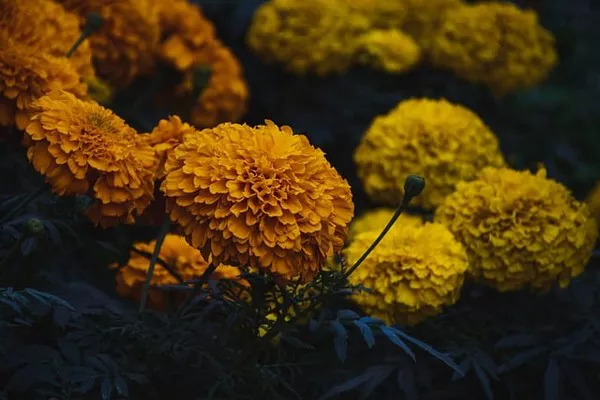Butterflies, with their delicate wings and vibrant colors, are not only enchanting to behold but also play a vital role in pollinating plants. If you’re a nature enthusiast or a gardening aficionado, creating a butterfly-friendly garden is an excellent way to support these graceful creatures while adding visual splendor to your outdoor space. To achieve this, it’s crucial to understand the types of flowers that butterflies are drawn to for nectar and habitat. This article delves into the fascinating world of butterflies’ favorite flowers, guiding you through the process of selecting, cultivating, and maintaining a garden that celebrates these wonderful pollinators.
The Science of Butterfly-Flower Relationships
Butterflies, like many other pollinators, have evolved specific preferences when it comes to flowers. These preferences are often driven by factors such as flower shape, color, scent, and the availability of nectar. Butterflies have a unique ability to see a wide range of colors, including ultraviolet light, which influences their flower choices. They are particularly attracted to bright, vibrant hues like red, orange, yellow, and purple. Flowers that have flat or shallow shapes, like daisies and coneflowers, are easier for butterflies to access and extract nectar from.
Top Butterfly-Friendly Flowers
1. Milkweed (Asclepias spp.):
Milkweed is perhaps the most well-known butterfly-friendly plant, as it serves as the host plant for monarch butterfly larvae. Monarch butterflies lay their eggs on milkweed, and the caterpillars feed exclusively on its leaves. Additionally, milkweed flowers provide nectar for various butterfly species. Varieties like Common Milkweed and Swamp Milkweed are excellent choices.
2. Lantana (Lantana camara):
Lantana’s vibrant clusters of small, tubular flowers are a favorite among butterflies. They come in an array of colors and provide abundant nectar. Lantana blooms profusely, making it a reliable source of sustenance for butterflies throughout the growing season.
3. Butterfly Bush (Buddleja spp.):
True to its name, the butterfly bush is a magnet for butterflies of all kinds. With its elongated flower spikes and sweet fragrance, this shrub is a must-have in any butterfly garden. Varieties like Buddleja davidii offer a wide range of colors, ensuring a steady stream of visitors.
4. Zinnia (Zinnia spp.):
Zinnias are not only easy to grow but also highly attractive to butterflies. Their bold, daisy-like flowers provide ample nectar and come in a rainbow of colors. Planting a mix of zinnia varieties can create a visually stunning and butterfly-friendly garden.
5. Coneflower (Echinacea spp.):
Coneflowers are not only beloved for their herbal properties but also for their ability to draw butterflies. Their daisy-like blooms with pronounced central cones offer an easily accessible nectar source. Purple coneflowers are particularly appealing to butterflies.
6. Black-Eyed Susan (Rudbeckia spp.):
With their sunny yellow petals and dark centers, black-eyed Susans are a classic choice for butterfly gardens. They attract not only butterflies but also other pollinators like bees.
7. Verbena (Verbena spp.):
Verbena’s clusters of small, fragrant flowers are irresistible to butterflies. This low-growing plant can be used as a ground cover or in containers, ensuring butterflies have easy access to its nectar.
8. Aster (Aster spp.):
Asters are fall-blooming flowers that provide a late-season nectar source for butterflies preparing for migration or hibernation. Their daisy-like flowers are available in various colors and sizes.
Creating a Butterfly Haven
Choose a Sunny Spot: Butterflies are sun-loving creatures, so select a location for your garden that receives at least 6 to 8 hours of direct sunlight each day.
Provide Shelter and Water: Butterflies need shelter from wind and predators. Incorporate plants with broad leaves or create small windbreaks to offer protection. A shallow water source, such as a birdbath with stones, provides butterflies with a place to drink and cool off.
Plant in Clusters: Planting clusters of the same type of flower helps butterflies locate and access nectar more easily. It also creates a visually appealing display.
Avoid Pesticides: Pesticides can harm not only pests but also beneficial insects like butterflies. Opt for natural pest control methods and embrace a bit of imperfection in your garden.
Provide Host Plants: To encourage butterflies to lay their eggs in your garden, include host plants specific to certain butterfly species. For example, parsley and dill are host plants for swallowtail butterflies.
Maintaining Your Butterfly Garden
Regular Watering: Keep your garden adequately watered, especially during dry spells. Moist soil ensures that nectar sources remain abundant.
Deadheading: Remove spent flowers to encourage continuous blooming and nectar production.
Weed Management:
Keep the garden tidy by removing weeds that can compete with your butterfly-friendly plants for nutrients and space.
Seasonal Attention: Plan for a variety of flowers that bloom from spring to fall, providing a consistent nectar supply for butterflies throughout their active season.
Conclusion
Creating a butterfly-friendly garden is not only a visually stunning endeavor but also a way to contribute positively to the environment. By understanding butterflies’ favorite flowers and their unique preferences, you can design a garden that not only provides these pollinators with essential nectar but also offers shelter and habitat. As you cultivate your garden, you’ll have the privilege of witnessing the delicate dance between butterflies and their favorite blooms, enriching your connection to the natural world and fostering a thriving ecosystem in your own backyard.


